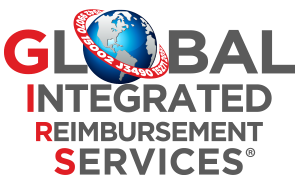The Centers for Medicare & Medicaid Services (CMS) published the Ambulatory Surgical Center (ASC) Payment System July 2020 payment rates for separately payable services, drugs and biologicals as well as newly created Current Procedural Terminology (CPT) and Level II Healthcare Common Procedure Coding System (HCPCS). The changes for July 2020 that are relevant for our clients are as follows:
1. New CPT Category III Codes
CMS is implementing 11 new codes in the ASC payment system. Some examples of new CPT Codes are listed below and the payment indicators for the codes can be found at https://go.cms.gov/2BiVWrr
Table 1:
2. New Device Pass-Through Categories
The Social Security Act requires that categories of devices be eligible for transitional pass-through payments between two to three years. It requires that new transitional pass-through payments are described based on existing categories of devices. Table 2 notes the new device guidelines effective July 1, 2020:
Table 2:
3. HCPCS Codes for Certain Drugs and Biologicals
Eighteen new HCPCS codes have been created for reporting drugs and biologicals in the ASC setting. HCPCS Q5120, Injection, pegfilgrastim-bmez, biosimilar, (ziextenzo), 0.5 mg, which was created 11/15/2019 was added to the ASC payment system effective 7/1/2020.
Table 3:
4. Drugs and Biologicals with Payments Based on Average Sales Price (ASP) for CY 2020
Main Highlights:
- Payment for non-pass-through drugs and biologicals: made at a single rate of ASP + 6 percent;
- OPPS pass-through drugs: a single payment of ASP + 6 percent continues to be made for the and biologicals
Payments for drugs and biologics based on ASP are released on a quarterly basis. As later quarter ASP submissions become accessible, the list of payments for drugs and biologicals based on ASPs will be updated. Updated payment rates effective July 1, 2020, can be found in the July 2020 update of ASC Addendum BB at: https://go.cms.gov/2BiVWrr
5. Drugs and Biologicals Based on ASP Methodology with Restated Payment Rates
Retroactive corrections occur quarterly and sometimes affect payment for drugs and biologicals impacted by the changes.
Access the list of corrected payment rates on the first date of the quarter at: https://www.cms.gov/Medicare/Medicare-Fee-for-Service-Payment/ASCPayment/ASC-Restated-Payment-Rates
- New Skin Substitute Products Low Cost Group/High Cost Group Assignment The payment for the two groups of skin substitute products, High Cost and Low Cost, that do not qualify for hospital OPPS pass-through status is packaged into the procedure.
Adhering to the ASC payment system, high cost skin substitute products should only be utilized with the performance of one of the skin application procedures described by CPT codes 15271-15278.
Low cost skin substitute products should only be utilized in combination with the performance of one of the skin application procedures described by HCPCS code C5271-C5278.
Table 4 notes the new skin substitute products and their assignment:
Table 4:
What is the importance of tracking ASC coding and billing change for #medtech?
- It is important to understand that even if a drug, device, procedure or service is assigned a HCPCS code and a payment rate under the ASC payment system, it does not imply coverage by the Medicare program; it indicates only how the product, procedure, or service may be paid if covered by the program. The payment for Products and procedures need to be tracked in all relevant settings of care.
- Tracking the changes in the ASC updates may be a starting point for coverage initiatives if necessary. The Medicare Administrative Contractors (MACs) determine whether a drug, device, procedure, or other service meets all program requirements for coverage. Improved coverage and payment will assist with greater patient access to the ASC services that are easier and more cost effective to access than inpatient care.
- For drugs, devices, biologics, and diagnostics that come under the ASC payment system, it is also important to understand the impact of changes in billing guidelines on accounts and company revenue.
- Usually, Billing Guides are updated with the new coding and billing guidelines.
- Providers need to be educated about these changes.
- Suppliers who have received retroactive corrections may need GIRS’ assistance to request their MAC to appeal incorrect retroactive changes to drugs and biologicals with payment rates based on the ASP.
- New Product codes and pass – through categories can provide competitor information or information on the pass – through status of the clients’ Product.
Additional Resources
- The official instruction, CR 11842, issued to your MAC regarding this change is available at https://www.cms.gov/files/document/r10188cp.pdf.
- https://www.cms.gov/Medicare/Medicare-Fee-for-Service-Payment/ASCPayment/11_Addenda_Updates
- The GIRS Payer Advocacy Compass PAC® team has over 17 years of experience tracking payer policies and payment and educating providers and stakeholders about changes to the policies to ensure coverage and reimbursement of our client’s medical technologies. We have improved patient access in the ASC setting and free-standing surgery centers for Medicare as well as the private insurance market by assisting ASCs with their contracts and coverage and payment initiatives.
Please contact us at info@girsinc.com or avail of our Complimentary Review of your reimbursement needs
About GIRS
For more than 17 years, GIRS has been assisting medical technology manufacturers with their market uptake and reimbursement strategies so that patients can have access to the care that they need. To implement successful market access strategies, the GIRS Value Discovery Landscape Assessments® team and the Payer Advocacy Compass® team work together to develop and implement foundation reimbursement landscape and payer advocacy strategies to obtain positive coverage, appropriate payment, and innovative payer contracting arrangements to improve market uptake. For more information, Email us at info@girsinc.com or call us at 901-834-9119 or request a Complimentary Review of your reimbursement needs.
Notice: CPT® is the trademark of the American Medical Association (AMA). Reimbursement information is dynamic and is based on payer policies and updates. This Blog information is current as of July 21, 2020.

